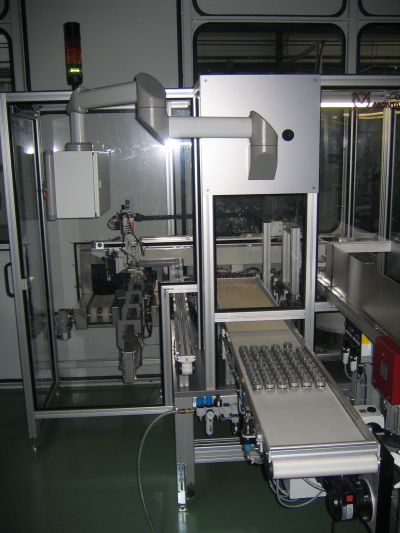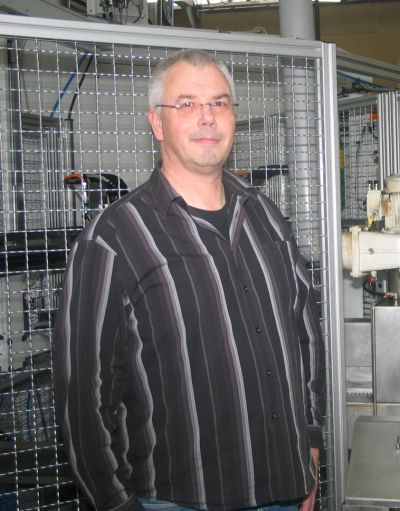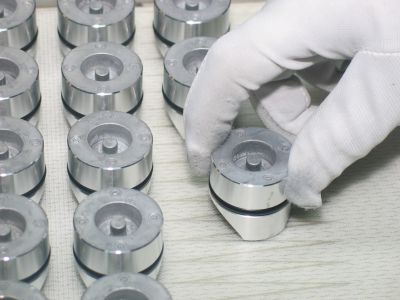As the automobile manufacturers are keeping costs to a minimum, the elements of the supply chain have little leeway. Therefore, raising efficiency is an ongoing process for the automotive suppliers. At the PNP Automotive GmbH, Crivitz near Schwerin, this becomes apparent in the production of chassis frame parts. These come as cast unfinished parts or profile pre-cut parts, run through precision machining trimmed to operating efficiency and go to the customer as certified, ready-to-install components. “For this purpose, we put a lot of know-how in the development of our own production concepts“, says PNP Managing Director Stefan Beetz.
Cleaning and conveying during throughput ensured
An example for this is pressure pieces for pinion steering gears. These cylindrical cast parts made of aluminium alloy are machined to end gauge at PNP. No more than a deviation of ±8 µm is allowed: during machining of the jacket face and grooving of a sealing groove. Afterwards the parts are cleaned. In the process, the residual dirt quantity must amount to no more than 0,5 mg per pressure piece. By now, these requirements are met for lots of up to 600,000 per year. The basis for this are interlinked processes, which on the one hand ensure the operating efficiency of machining, and on the other hand make for a high reproducibility of the deliverables. Thus, a CpK value better than 1.67 must be adhered to during machining.
Everything from submission of the cast parts to the clean room for the visual final inspection is carried out automatically, including separation, feeding, parts extraction, gauging and assembly of the O-ring seal and the so-called insertable sheet. Only this way the high cleanliness of parts could be guaranteed down the line, Beetz explains. Responsible for this is the conveying machine TW 105 of the manufacturer PERKUTE Maschinenbau, Rheine, in which a four-stage cleaning process takes place: washing, rinsing twice and drying. Washing and rinsing takes place by spraying method, drying with warm air, whereby washing is followed by a dripping and blow off zone and both rinsing processes are “driven“ with so-called de-ionised water. Thus, not only do the parts leave the 3-bath system in a clean and dry, but also in a stain-free state.
But this is not yet the full extent of the functions of the cleaning plant, which also undertakes conveying the parts between machining centre and clean room and thus represents the „most important element of the complete system“ for Beetz. If it fails, the other elements will soon afterwards come to a standstill, because the buffer behind the machining centre fills up quickly and further conveying – unlike the assembly of seal and sheet – can be switched over to manual operation. Thus, the conveyor belt of the system is of great importance. It acts as a conveying element for the cleaning of parts and at the same time buffer track in order to balance fluctuations between the elements of the process chain. Washing, rinsing and drying take place in a clock cycle of 6 s each. Afterwards, each part is conveyed to the next treatment zone in the system, as soon as the handling robot passes through a light barrier with a further part for system infeed.
Conveying the parts in the system conforms to the machining cycle. During the in-between phase, the parts are automatically extracted from the machining centre, measured and placed onto the conveyor belt in series by the handling robot, so that rods coated with PTFE and positioned on both sides, can guide them. The Perkute-machine is designed for lots of up to 1.2 million per year. As soon as the second machining centre is up and running this coming summer, running production at full capacity will be targeted. The machine will then receive parts from both machines for cleaning and further conveying. By then, even the last manual element of the process chain – the visual final inspection of the pressure pieces in the clean room – will have been switched over to automatic image acquisition and processing.
High component cleanliness is essential for the result
For Beetz this is a step towards establishing PNP more deeply within the precision machining of high-volume productions. It has been a supplier to the market for six years now. During this time, according to the Managing Director, the leap to becoming the primary vendor “for all parts, which we received for machining as secondary vendor“ has been accomplished. The reason for this is the conceptual orientation of PNP: “For those who require dimensional accuracy that is second to none, you are at the right place here“, says Beetz. This includes high cleanliness of parts. This is essential for the result – as well as high operating efficiency. Both had already been aimed for with the pressure pieces, for example, before we had the lots of today, which yielded continuity for the transition to the high-volume production. This continuity was achieved by means of machines and systems from standard production series. Thus, flexibility with regards to assembly, application and automation could be maintained.
That way, when parts are alternated, the cleaning plant can be retooled. Furthermore, the automation concept of the throughput cleaning process with parts conveying and buffer track can be transferred to other process chains, just as is now taking place at PNP with the aid of a further cleaning plant by PERKUTE Maschinenbau: for the machining, cleaning and quality testing of disk-shaped steel base plates for airbag systems. These are delivered as cast parts and turned to end gauge with great accuracy. The machining oil is used as cooling lubricant; the entrainment of the oil through the parts is high. This cooling lubricant must be removed form the plates, in order to facilitate resistance welding without further cleaning measures. According to Beetz, this requires „very clean joint faces“. MM









 Please let us know!
Please let us know!